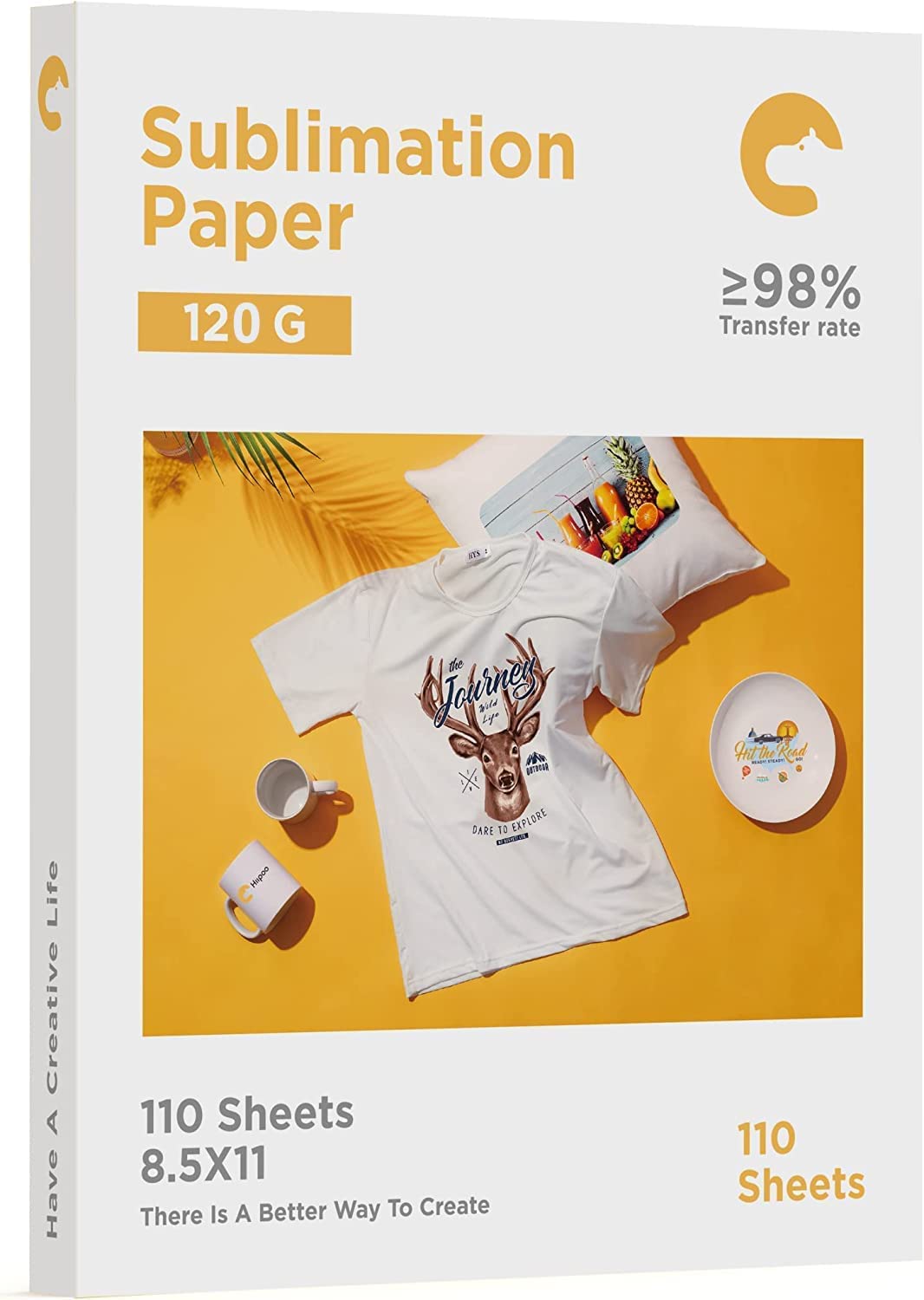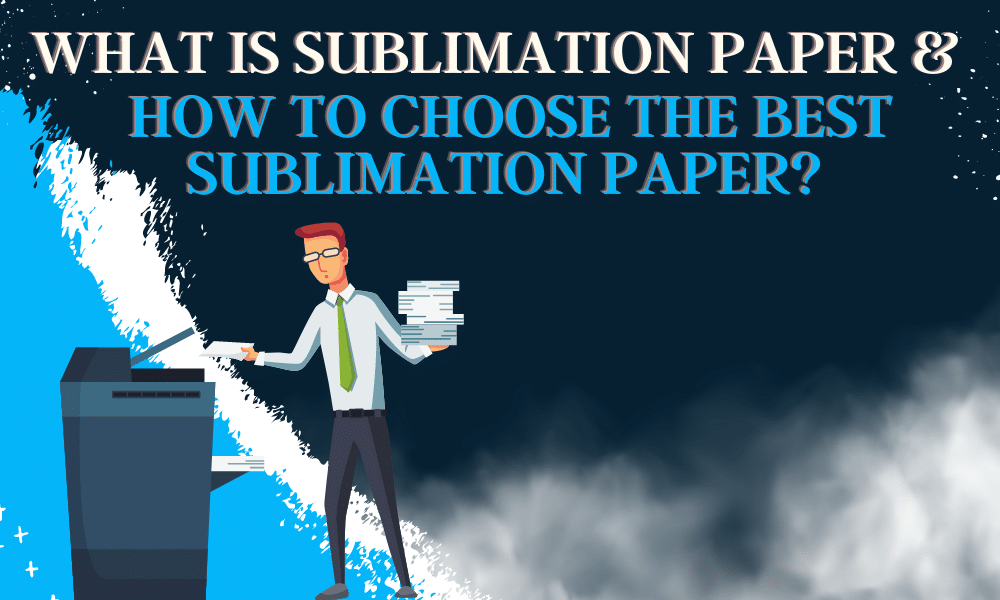Sublimation printing is the current big thing that has taken the printing world by storm. If you are new to sublimation printing, you must have some questions about it such as what exactly is sublimation printing, what is sublimation paper, and how does it work? We are here to answer these questions and more through this short comprehensive guide.
What is Sublimation Printing?
Sublimation printing is a method of transfer printing that allows you to print on a number of different surfaces including fabric and ceramic without using heavy machinery, all you need is a sublimation printer and a heat press. You can use a sublimation printer to print a design on a special sheet of paper called sublimation paper and then transfer it over to a t-shirt or any other material with the help of a heat press. A heat press is not as scary as it sounds and you can get really good deals if you find a packaged deal for all the sublimation supplies when you are just starting out.
A sublimation printing business is one of the most lucrative ways to get into the ever-evolving fabric printing business where you don’t even need to have a large crew, even a single person can operate all the moving pieces and churn out impressive prints in a relatively short period of time. The demand for sublimated products is rising exponentially as sellers are offering custom design printing services where customer can upload their own designs and have the product printed for them.
What is Sublimation Paper?

Sublimation paper is one of the most important tools you need in order to sublimate a design on a piece of fabric or on the surface of a material. The paper is mostly made up of paper substrate but one side of the paper is coated in a special coating which helps the paper retain the sublimation ink on its surface without absorbing it. The design can then be transferred over to a number of different surfaces including fabric and ceramic.
The coating of sublimation paper consists of about thirty-five percent silica along with a binder. The special coating is what allows the design to transfer over to any desired fabric or material surface as it melts in the heat transfer process, transferring the sublimation in the process. Sublimation paper is one of the most significant operational costs in your sublimation printing business as it can not be reused.
Sublimation Paper for Cotton Shirts
Choose the Right Sublimation Paper for Sublimation on Mugs
Choose the Right Sublimation Paper for Dark Fabric Printing,
Best Sublimation Paper to Sublimate on Cotton,
Best Sublimation Printing Softwares For Design in 2023
How to choose the Best Sublimation Paper?
Taking some time to choose a sublimation paper that is right for your business will pay off tremendously in the long run. There are several factors on which you can judge a sublimation paper and find out if it is the right fit for your business or personal use. The following are some of the main factors that you can judge a sublimation paper on, take a look.
Ink Retention
The primary quality of a sublimation paper sheet is to retain the design made using sublimation ink as perfectly as possible so that it can then be transferred over onto another surface so naturally ink retention or the ability to hold ink is of paramount importance.
Paper Thickness
The ideal thickness of sublimation paper is 120 GSM as it is the sweet spot between thickness and the ability to contort depending on the mold used. The ideal thickness of sublimation paper also depends upon the intended use and if you do not need the paper to take the shape of a mold then going with a higher GSM paper is also perfectly okay.
Print Speed
The print speed of the sublimation printer used can also be the determining factor when choosing the right sublimation paper for your business. If you are churning out designs at a faster then the thickness of the paper can be lower as not much ink will need to be contained. If the design that you are printing has lots of definition and will require a significant amount of ink then choosing a higher GSM paper is the safer choice as it will be able to retain more ink.
Price
Sublimation printer is one of the most significant operational costs in a sublimation printing business as they can not be reused so try not to get too attached to one brand and try to go with the best option available after weighing in the cost of the paper along with its features. If you are trying to create the best quality prints then going with a higher quality paper with a higher price tag can also be justified.
We’ve filtered out the best sublimation papers that are available on amazon. You can check them out.
FAQs
What GSM paper is best for sublimation?
Sublimation papers weighted around 120 GSM are considered best for sublimation. A sublimation paper with any lower thickness might deform when the design is printed on it because of absorbing sublimation ink and a thicker paper might drink too much ink.
What is sublimation paper made of?
The sublimation paper is made using a paper substrate which makes it ideal for sublimation printing. A special coating is also applied to the surface of the paper that helps the paper transfer the printed design on a number of different surfaces.
Do I need to trim the sublimation paper before heat transfer?
Yes, you should always trim the empty area of the sublimation paper as it will show up as white on the fabric. It is not really a problem while working with lighter-colored fabric but you will be able to make it out when you are sublimating on darker fabric.
Can I reuse the transfer paper?
No, once a sheet of sublimation paper has been used to transfer the design it can no longer be used. If you reuse the sublimation paper, the previous design will more than likely ruin the current one and you will end up with unexpected results and not what you intended. The plastic lining on the sublimation paper also melts away in the heat transfer step of sublimation which makes it unfeasible to reuse.

